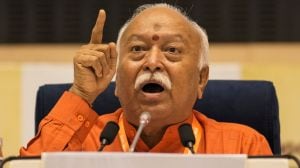Stay updated with the latest - Click here to follow us on Instagram
Faulty maternal,neonatal death registration in Gujarat: IIM study
Even as the state government claims to have successfully brought down maternal and infant mortality rates after the implementation of the Chiranjeevi scheme...
Even as the state government claims to have successfully brought down maternal and infant mortality rates after the implementation of the Chiranjeevi scheme,a survey by the Indian Institute of Management,Ahmedabad (IIM-A) reveals under reporting of such deaths and faulty registration.
Titled Saving mothers and newborns through an innovative partnership with private sector obstetricians: Chiranjeevi Scheme of Gujarat,India,the report calls for a foolproof system in place for detailed registration of maternal and infant mortality in Gujarat.
The Chiranjeevi scheme has been fairly successful and there is evidence of substantial reduction in mortality rate in the state with easy access to obstetricians in the rural areas. But there are instances when deaths are not recorded by the doctors,which make it difficult to get a clear picture of the schemes impact. There is a need for better recording of maternal and neonatal deaths, said project researcher,IIM-A Prof Dileep Mavalankar.
The study is a compilation of the states mortality reports prepared by the government from January 2006 to December 2008,tallied with the mortality report of the Registrar General of India (RGI).
As per the analysis,only 52 maternal deaths were reported,as against 588 deaths out of 2,69,942 deliveries in the absence of the Chiranjeevi scheme.
On the same lines,only 1,061 neonatal deaths were reported as against 10,798 deaths among 2,69,942 deliveries consideraing a Neonatal Mortality Rate (NMR) of 40,the data revealed.
We had taken a special survey conducted by RGI as the base which calculated MMR of 202 in 1999-2001 and 172 in the 2001-03 survey. According to this we estimated MMR in 2007 to be around 97. Presuming that the MMR among the poor is 1.5 times more than the average mortality,we assume that the present MMR should have been around 218 instead of 52 as reported, said Mavalankar.
He added: Similarly,we assume a 300 per cent undercount in the NMR reported. A proper and detailed mortality reporting will help the state government to better the scheme.
As per details of the state Health Department,MMR between January 2006 and September 2009 has gone down from 172 per one-lakh live births to 160,while NMR has gone down from 54 per 1,000 live births to 50.
We generally tally the compilation of district-wise mortality data with other modes of death registration. Although disparities are found sometimes,it is not alarming, said a senior Health Department official.
There have also been reports of last minute referrals of critical patients by Chiranjeevi doctors.
Dr R B Patel,president of the Federation of Obstetric and Gynaecological Societies of India (FOGSI),said: We have not had reports on doctors forgoing on reporting maternal and infant deaths as there is no direct benefit in doing so. But there might be some who do not report properly.







